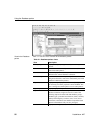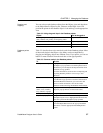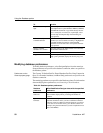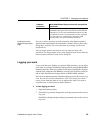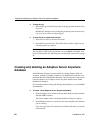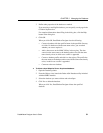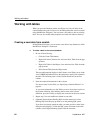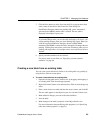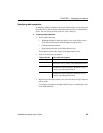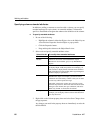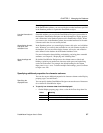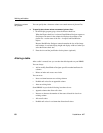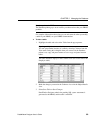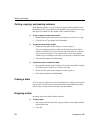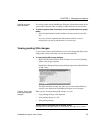
Working with tables
64 DataWindow .NET
Specifying column definitions
When you create a new table, you must specify a definition for each column.
The fields that display for each column in the Columns view depend on your
DBMS. You might not see all of the following fields, and the values that you
can enter are dependent on the DBMS.
For more information, see your DBMS documentation.
Table 3-5: Defining columns in the Columns view in the Database
painter
Specifying table and column properties
After you create and save a table, you can specify the properties of the table
and of any or its columns. Table properties include the fonts used for headers,
labels, and data, and a comment that you can associate with the table. Column
properties include the text used for headers and labels, display formats,
validation rules, and edit styles used for data (also known as a column’s
extended attributes), and a comment you can associate with the column.
Field What you enter
Column Name (Required) The name by which the column will be identified.
Data Type (Required) Select a datatype from the drop-down list. All
datatypes supported by the current DBMS are displayed in the list.
Width For datatypes with variable widths, the number of characters in
the field.
Dec For numeric datatypes, the number of decimal places to display.
Null Select Yes or No from the Null drop-down list to specify whether
NULLs are allowed in the column. Specifying No means the
column cannot have
NULL values; users must supply a value. No
is the default in a new table.
Default The value that will be placed in a column in a row that you insert
into a DataWindow object. The drop-down list has built-in
choices, but you can type any other value. For an explanation of
the built-in choices, see your DBMS documentation.



